Bensenville Railroad Museum
Historic Train
Here is where you will find a 1922 steam locomotive and see where the engineer and fireman sat and ran the engine! Visitors can also walk through a real passenger car that rode the rails between 1947 and 1969 and see many historic photos and timetables of railroading in the area in addition to a display of model railroads. The Milwaukee Road’s last steel caboose is also at Veterans Park and offers displays of additional historical railroad artifacts.
Also on the grounds, you’ll also find a Wig-Wag signal, a semaphore signal, a watering tower, an old wooden baggage cart, and an old “Gandy Dancer” motor car at the north end.
The train can be opened for group tours with advance notice, subject to volunteer availability. For more information please contact Fischer Farm at 630-834-3152.
The Steam Locomotive
Built in 1922 by the American Locomotive Company, Steam Locomotive #1 was pressed into service at Studebaker’s South Bend Indiana plant to move material around their massive grounds. The locomotive was eventually sold to the Chicago Gravel Company for use at their facilities in Elgin, Illinois. There, it was renumbered to its current #18. In 1961, The Greater Bensenville Day Corporation purchased the locomotive from the gravel company, and it was transported to its current location.
The locomotive has an 0-6-0 wheel design, and weighs about 75 tons. It is a coal fired engine. A limited amount of coal was stored in the adjacent tender. The tender weighs about 15 tons and could carry 7 tons of coal and 5000 gallons of water.
Inside the cab, the engineer and fireman operated the multiple controls, with the fireman’s duty of making sure the fire stayed hot enough to continue to generate steam to move the locomotive. Because the locomotive was only used in a small area and not used for long distance trips, the tender did not need to hold a larger amount of water and coal.
Touralux Sleeper
One luxurious way to travel the rails in the late 1940s and 50s was on this Touralux Sleeper. Built in 1947 by the Milwaukee Road’s Menominee Valley Shops, this car was in service on the Olympian Hiawatha between Seattle, Washington and Chicago, Illinois until about 1969. Then it was used elsewhere in Milwaukee passenger service. The car’s restoration in the 1990s, here at Veterans Park, was for the purposes of business functions. A copy of the original blueprints is on display, along with many photos and artifacts.
The Caboose
For the longest time, one could always count on a caboose being at the end of a train. It was quite symbolic. Except for a few trains that service local industries, the caboose has all but vanished from existence. It’s been replaced by electronic telemetry devices that convey critical information to the engineer.
Milwaukee Road Caboose 992114 is reportedly the last caboose actually built by the Milwaukee Road at its own shops. It was put into service in 1951. It was moved to the park in 1983. The caboose currently houses artifacts from various railroads. It also has replicas of seating arrangements that existed when the caboose was still in service. Inside, you’ll also find an HO display explaining the different types of railroad cars used today.
Wig Wag Signal
Today’s railroad crossing warning systems alert drivers with large flashing lights, loud clanging electronic bells and aluminum or wood gates that drop down across the roadway.
Yesterday’s warning system consisted of a single, round “banjo style” sign that swung back and forth, illuminating a small red light and ringing a small bell. It hung over the road by about 10 feet, or was simply to the side of the road. You can view this signal near the entrance to the museum grounds.
The Semaphore
In order for to convey to the train crew that they have “permission” to take a train down a certain track, it is necessary to use signals. These signals used to be in the form of a large metal blade mounted on a pole. The correct color or “aspect” would illuminate, along with the correct position of the arm. If the blade was up, it would show a green signal – it meant go.
If the blade was horizontal, the red light would show, and it would tell the train crew to stop.
The Watering Tower
Steam locomotives needed water, which would be boiled by the fire and turned into steam. This steam would build up pressure and turn the wheels of the locomotive. Spouts would be attached to the watering tanks at strategic locations along the tracks, and simply tugging on them would send a torrent of water down into the holding tanks on the locomotive. An example of a watering tower spout is located on the east side of the locomotive.
Train Museum Open Houses
Come to Veteran’s Park and explore the Bensenville Train Museum! The train will be open one Saturday per month with drop-in hours from noon to 4 p.m. Explore the history of trains in Bensenville on a real 1920s engine. Complete a different craft or activity each day. Try them all!
Noon-4 p.m.
Saturdays and Sundays

Fall 2024 Program Guide
Fall program registration begins August 6
View Fall Program Guide View Summer Program Guide Registration Info





